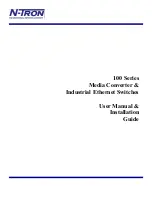
Section 6: Instrument programming
Models 707B and 708B Switching Matrix Reference Manual
6-58
707B-901-01 Rev. A / August 2010
Using TSP-Net vs. TSP-Link for communication with TSP-enabled
devices
TSP-Link is the preferred communication method when communicating between the Model 707B or
708B and another TSP-enabled instrument. The advantage of using TSP-Link over using TSP-Net
include:
•
Error checking
: When connected to a TSP-enabled device, all errors that occur on the remote
device are transferred to the error queue of the Model 707B or 708B. The Model 707B or 708B
indicates errors from the remote device by prefacing these errors with “Remote Error”.
For example, if the remote device generates error number 4909, the Model 707B or 708B
generates the error string “Remote Error: (4909) Reading buffer not found within device.”
•
Digital I/O Triggering
: TSP-Link connections have three TSP synchronization lines that are
available to each device on the TSP-Link network. You can use any one of the TSP
synchronization lines to perform hardware triggering between devices on the TSP-Link network.
Refer to
(on page 3-12) for more details.
These advantages make using TSP-Link to control another TSP-enabled device the best choice for
most applications. However, if the distance between the Model 707B or 708B and the TSP-enabled
device is longer than 15 feet, use TSP-Net.
To establish a remote TSP-Net connection with a TSP-enabled device, use
(on page
7-229) without specifying a port number. The Model 707B or 708B enables TSP prompt and error
handling for the remote device, which allows you to successfully use the
tspnet.tsp
set of
commands to load and run scripts and retrieve reading buffers.
Abort any operation on the remote TSP-enabled device using
abort()
.
















































